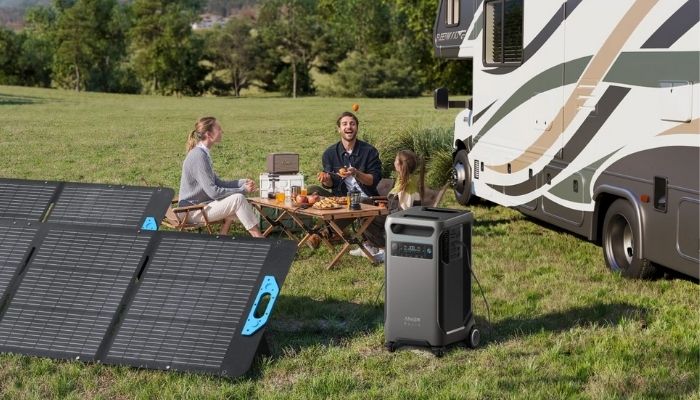
How Does a Solar Generator Work? – Everything You Need to Know About Solar Power Generators
Gas generators are great, but when there’s a lack of fuel, you’re just as toast as everyone else on the block.
Solar generators can provide off-grid energy consistently over long periods of time without requiring anything other than the Sun.
Whether you are in search of a practical off-grid living alternative or want a standby power supply in case of a power outage, solar generators provide a green solution that can be as effective and, in many cases, more effective than propane or gas generators.
Having backup power for your home appliances and personal devices is essential as more and more people rely on these technologies to survive, thrive, and stay connected with others. Solar generators are not only used to power home appliances like fans, small-to-medium-sized air conditioners, and refrigerators but are also useful for providing reliable backup power for critical medical devices such as CPAP machines and other at-home health monitors. Solar generators can also be used for recreational activities such as fishing, camping, or RV trips. When it comes to these activities, investing in a portable solar system is the way to go.
Solar Generators vs. Fuel Generators
While fuel generators may work in many of the previous instances, they have several drawbacks. They are contaminating, noisy, and, as we all know, rely on fuel. When caught up in emergency situations like floods, blackouts, hurricanes, or earthquakes, you may not be able to access a fuel source, rendering your gas generator useless. Now, thanks to innovative technologies that combine solar power with lithium-ion or lead-acid batteries, you can obtain a green energy backup source at any time you need it.
This is part 1 of the blog series, which consists of an in-depth guide for beginners all the way to experts regarding the topic of solar power generators.
What is a Solar Generator?
Before we can dive into the various models and styles of solar generators, it is important that we first examine the basics. A solar generator is very different from a fuel-based generator. While both convert raw energy into a usable energy source, solar generators harness the power of the Sun instead of using fuel as the raw energy. A solar generator is a compact electronic box that consists of three main components: a charge controller to control the flow of energy coming in from the solar panels, a battery or batteries to store the energy from the solar panels, and an inverter to convert the energy from the battery to the various AC devices used with the generator.
If you need to know more about, check out our blog what is a solar generator.
How Do Solar Generators Work?
A solar generator integrates a charge controller, a battery pack, and an inverter into a compact system to convert solar energy into an electrical current. To better understand how solar generators work, we will discuss each of the components and their functions individually.
Solar Generator Component Number One: The Battery
A solar generator needs to store the energy it collects from the Sun for later use. The battery functions as the storage unit. Lithium-ion batteries have been used in a wide variety of solar generators since roughly 2016, but you can also use lead-acid batteries, which are abundant and cheaper than lithium-ion ones upfront. That being said, lithium-ion batteries have a few significant advantages over lead-acid batteries, one advantage being that they are more affordable in the long term.
Solar Generator Component Number Two: The Charge Controller
The charge controller is a vital component of a solar power generator. Its main purpose is to protect and promote the durability of the battery. Charge controllers usually have differing features for charging and discharging based on the type of battery and solar panels that you’re using. The charge controller is a crucial component of the solar generator system because it balances the power dynamic between the solar panel and the battery.
Solar Generator Component Number Three: The Inverter
The inverter converts the low DC current from the battery to AC power that can be used to power appliances and devices in your home. DC items can actually do without the inverter since the electricity does not need to be converted.
In summary, a solar generator works by trapping solar energy through the solar panels and then storing the energy in its built-in battery. It then converts the energy into AC power through an inverter before it’s released for use in home appliances and other electrical devices. When combined, these three components make a fully functioning solar generator.
For a full-depth solar generator post from my website, click the link found in the description below. Stay tuned for the next section in the blog series titled “Solar Generators vs. Gas Generators: Why You Should Opt for Solar.”
Thanks for reading! Let me know what you guys think in the comments. I like hearing your questions, thoughts, opinions, stories, and feedback.
Thanks!
